Radiant heat is installed in floors as the home's principle heating source as well as in floors to supplement an existing heating system. There are several different types of floor heating elements, giving you many options when it comes to heating the various kinds of flooring throughout your home. Each floor heating system is designed with particular strengths, making some better for warming certain types of floors than others. Regardless of the flooring, you can be sure to find an ideal radiant heating system for your needs at Warmzone®.
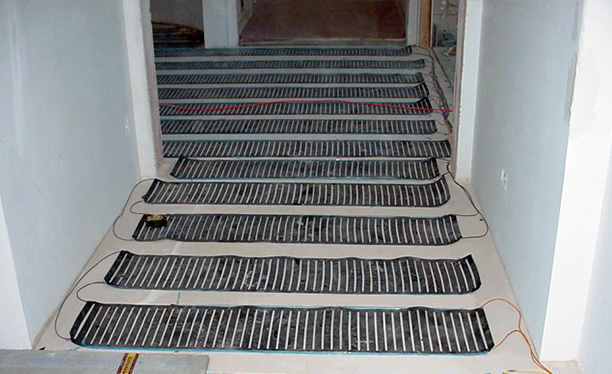
Radiant heat is commonly installed under virtually all kinds of flooring, including ceramic tile, marble, slate, hardwood, laminates, and even carpet. These efficient floor heating systems include an advanced thermostat so they can be programmed to warm the floors according to your schedule.
Radiant floor heating systems typically feature heat cable that can either be installed directly in the concrete slab under floors, in thinset, or directly under hardwood and laminate floors. Some systems include reflective "foil" to enhance efficiency by evenly distributing the warmth while also directing all the heat upwards to further optimize efficiency. Thin "film" heating elements can also be installed to heat floating floors, or stapled up between floor joists to heat existing floors.
The most common floor heating method utilizes thin ComfortTile® heat cable that is usually embedded in the thinset for heated tile floors. The properties of ceramic tile make it one of the most popular surfaces for radiant heated floors.
Warmzone frequently designs radiant heat systems for log homes and cabins. Depending on the climate, available energy resources and budget needs, Warmzone will help you select a radiant heating system or combination of heating systems to meet the heating requirements of your log home or cabin.
Radiant floor heat is commonly installed under floors in lower levels of homes and in basements. The heat from forced-air heating systems rises and makes heating basements difficult. The ideal time to install radiant heat in a basement is in new construction applications. One of the most trusted and popular radiant heating solutions for heating concrete slabs is In-Slab™ Cable. The heat cable is installed during the concrete pour and is very efficient because of the properties of concrete. The warmth radiates from the heat cable through the concrete, which retains the heat for long periods of time, making this a highly sought after solution for heating basement floors.
There are a variety of other electric floor heating systems as well as hydronic radiant floor heating solutions available from Warmzone. Call and speak with one of our radiant heat experts to determine which system is best for heating your floor. We are happy to go over your options and identify the particular strengths of the various systems for heating your specific floor type.
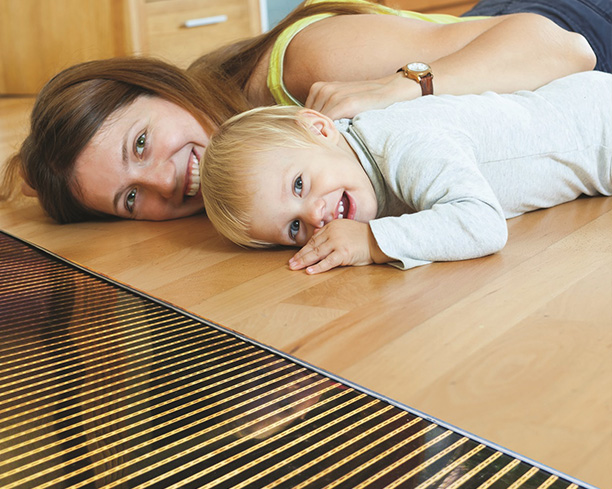
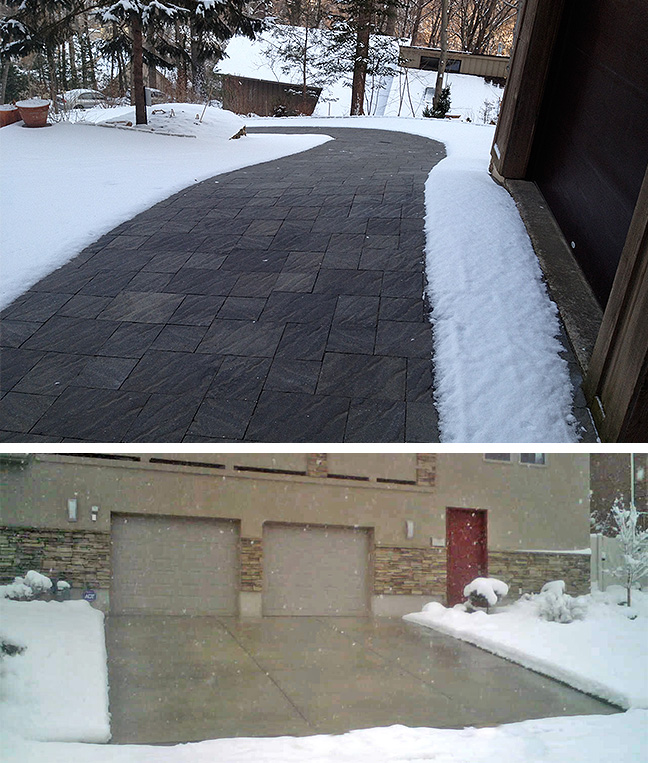
In cold weather climates, radiant heated driveways and sidewalks are extremely popular. Warmzone's most trusted snow melting system is the ClearZone® radiant heat system. These fully automated snowmelt systems utilize twin-conductor, single-point connection heat cable that is typically installed with a spacing of 3 or 4-inches (37 and 50 watts per square foot), depending on the project needs. The snow melting system can be easily customized to meet the unique demands of virtually any type of snow melting project. To ensure the optimum performance of your system a host of factors are considered, including the location of the home, elevation, average winter temperature, and annual snowfall, etc.
Warmzone takes all of your project information into account and carefully designs each snow melting system to perform best in that specific condition while meeting all the requirements of the customer. All the system specs are identified as well as the best product components prior to creating a detailed AutoCAD showing the proper load calculations, number and sizes of breakers, system layout, etc. Proper installation is vital, which is why Warmzone goes to such great lengths to provide unprecedented customer services such as personal installation support, professional system design, and even free installation training.
Warmzone snow melting systems are easy to customize and have been used to melt snow in a variety of applications throughout the U.S. and Canada. Installations range from commercial parking areas and ramps, heated city sidewalks and public transit authority hubs (train and bus stations), to heated driveways, loading docks, runaway truck ramps, and even steps, etc. The fully automated operation of radiant snow melting systems is especially valuable for businesses in order to keep sidewalks and entry ways clear of snow and ice, thereby minimizing the chances of injuries and litigation due to customers and employees slipping and falling.
The most common snow melting system installations are in concrete, under pavers, and asphalt. For asphalt installations, Warmzone's asphalt CZ cable is specially designed to withstand the extreme temperatures associated with hot asphalt, and is a proven industry-leading solution for demanding asphalt installations. The cable's outer jacket is rated for temperatures up to 460°F for 10 minutes. During installation, the heat cable is laid out and secured and then hot asphalt is applied over the top and then compacted. (For detailed installation information, refer to the ClearZone installation manual.) For more information and ClearZone product specifications, please refer to the ClearZone product data sheet that's available for download on our product literature page.
Loading docks and ramps can be dangerous and even unusable if they are not cleared of snow and ice. The reliable automated performance of ClearZone snow melting systems make it the optimum solution for protecting businesses by keeping docks, loading ramps, and wheelchair ramps free of snow and ice. In fact, automated radiant heat systems have proven to be the number one solution for adhering to the strict guidelines of the American Disability Act by keeping ramps clear 24/7.
Parking ramps leading up or down to parking structures can be difficult to keep clear of snow and ice. This presents a dangerous condition for vehicles accessing the parking structure. Automated snow melting systems are ideal for keeping these accident-prone inclines safe. The automated systems can also be activated manually in order to deal with snow drifts or ice that has formed in areas that receive no sunlight.
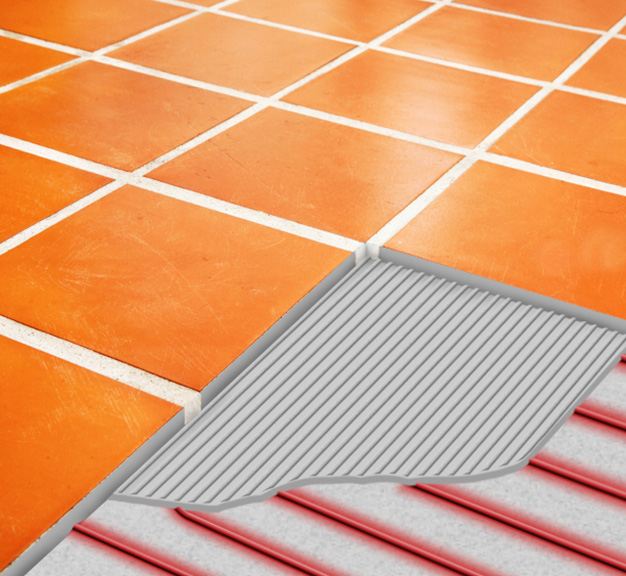
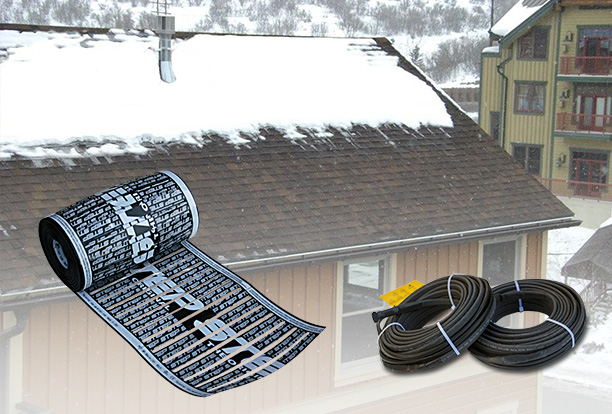
Warmzone offers a variety of roof de-icing products that can be installed to heat a wide range of roof types. Low-voltage RoofHeat™ STEP systems feature thin, self-regulating heating elements that can be installed under shingles as well as metal roofs. The flexible heating element can be installed along the roof edges and in roof valleys. These low-voltage systems utilize a step down transformer, and are installed discreetly under the roofing material. Self-regulating heat cable is also a common roof de-icing solution used to heat gutters and downspouts as well as roof edges. The cable is secured with roof clips and is "zig-zagged" along the roof edge to help guard against structural damage and prevent costly water damage in your home. Heat trace cable also facilitates runoff while protecting roof gutters from heavy icicles, and enhances safety by eliminating falling ice.
Radiant roof de-icing systems can be custom designed and used for just about any type of roofing application. Warmzone roof heating systems are commonly installed on asphalt, shake, tile shingles, single-ply membrane, and metal roofs.